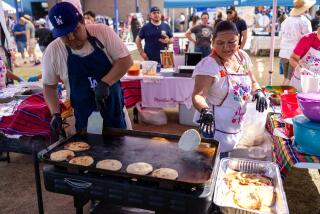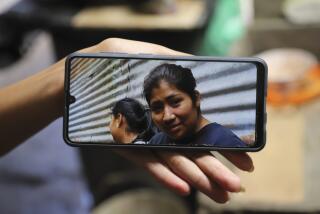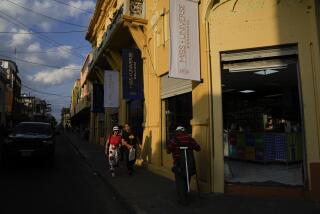Debating Cost of Funding Athletics
- Share via
COMALAPA, El Salvador — Beneath a banner proclaiming “Eva Maria lifted up El Salvador,” this tiny country’s only medal winner in last week’s Pan American Games arrived home to the blaring trumpets of a mariachi band and bouquets of pink gladioli, white roses and birds of paradise from dozens of well-wishers.
The 58 other members of the team sneaked back into the country on separate flights, more embarrassed than deportees.
Except for those few moments when Eva Maria Dimas struggled to heft a 203-pound barbell and finish third in women’s weightlifting--saving her country from a last-place finish--Salvadorans watched the games in Winnipeg, Canada, with a mixture of shame and fury.
“If all that Salvadoran sports could harvest in the Pan American Games was a bronze medal, without a doubt the Olympic Games of 2000 in Sydney are a celebration that all Salvadorans, including the athletes, should just watch on television,” advised Ivan Miranda, sports editor of the daily newspaper La Prensa Grafica.
From table tennis to archery to squash, Salvadoran athletes were eliminated in first-round competition. The losses were especially hard to take because in the four years since the last Pan American Games, El Salvador had begun to think of itself as a budding sports powerhouse.
Government and private support for sports has increased markedly, although officials at the National Sports Institute said that a figure for how much the country spends on sports was not available.
The budgets of the 16 sports federations that groom Salvadoran athletes have risen from paltry to respectable. Four years ago, the government’s allotment to the weightlifting federation, for example, was $4,600 a year; this year it was $345,000.
With the increase, the federation hired a Hungarian trainer and offered modest stipends to promising athletes. Dimas, 25, receives one of the top stipends at $345 a month, about the same as a teacher’s salary.
In 1994, a remodeled factory was opened as an Olympic village where the country’s best 52 athletes could live and train, rent-free. Sports officials recruited the children of Salvadorans who lived abroad but who could represent the country.
Until now, the country thought the investment was paying off. The Salvadoran team was first in the Central American Games of 1997 and was a serious contender in the Central American and Caribbean Games last year. U.S.-born cyclist Maureen Vergara, whose mother is Salvadoran, won a gold and a silver, respectively, at those competitions.
“The enthusiasm generated by those victories created illusions and hopes for an unprecedented performance at the Pan American Games,” said sportswriter Alexander Torres. “This put our feet back on the ground.”
Now Salvadorans need to figure out where that ground is and whether they want to keep pouring more of their limited national budget into sports.
“Three years is not enough,” said Mirna Fuentes, manager of the judo federation, whose athletes were eliminated in the quarterfinals. “We need six or seven years to see results.”
But after the recent disappointment, Salvadorans may not be willing to give sports officials three or four more years of financing.
“For many people,” said sportswriter Mario Enrique Paz, “Eva Maria Dimas’ bronze cost the country too much.”
More to Read
Go beyond the scoreboard
Get the latest on L.A.'s teams in the daily Sports Report newsletter.
You may occasionally receive promotional content from the Los Angeles Times.






